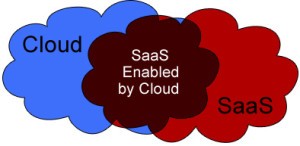
SaaS and cloud computing: the differences explained
The Merlin team is often asked what the difference is between SaaS (Software as a Service) and cloud computing. We came across this blog post today which helps answer this question.
When businesses are looking to purchase a web-based software, they are often faced with two terms that marketers use interchangeably: Software as a Service and cloud computing.
Both terms essentially describe software applications that are delivered and accessible over the internet. However, there are some fundamental differences in these two terminologies. This blog entry will briefly define and compare these two terms so you can better understand their differences and similarities.
SaaS: A delivery mechanism
SaaS refers to a type of delivery mechanism for software applications. Unlike traditional software that requires upfront licensing costs and software installation, SaaS delivers software applications over the internet and do not require software installation. Instead, an end-user simply needs an internet browser to fully use and access the software. This delivery model allows end-users to use software applications on a pay-per-use or on a subscription model.
Cloud Computing: A type of technology
Cloud computing refers to a type of technology to run software applications. This technology refers to computing resources such as hardware, storage, software, database, etc., which essentially provides the computing power to run software applications and to perform work.
What SaaS and Cloud Computing mean to you
Most web-based software vendors uses cloud computing technology to deliver their software applications using the SaaS delivery model. This allows businesses and end-users to access software applications from anywhere with internet access while using the computing power of the web-based software vendor.
Whether you are a business owner or an end-user looking to purchase Software as a Service applications, keep in mind that SaaS software vendors should always provide you with a pay-per-use or a subscription payment model with no upfront software costs.
In a sense, you are “renting” the software application from the vendor. This rental ownership model gives SaaS vendors the responsibilities of software updates, upgrades, maintenance, and other major responsibilities.
If the vendor is using cloud computing technology to deliver their software via the SaaS model, the vendor should provide all the computing resources and enough computing power to accommodate spikes in software usage, which gives you flexibility, scalability, and no upfront costs on these resources.”



